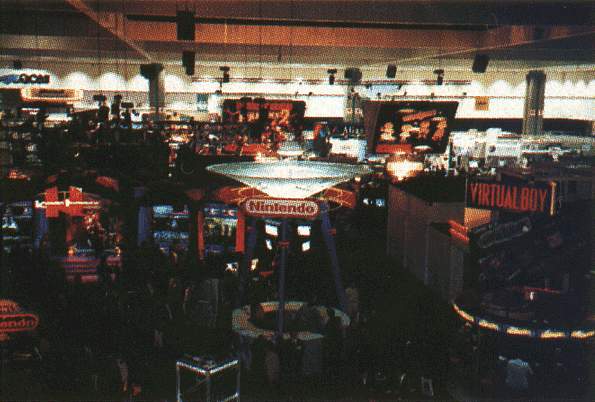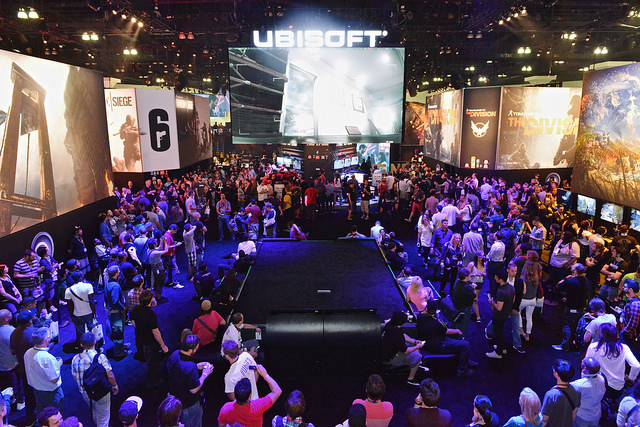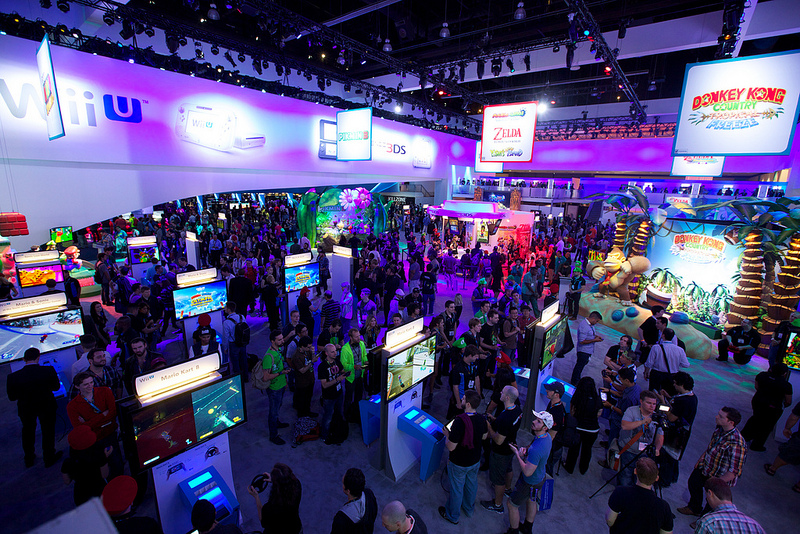Gaming, on the whole, has gone through quite the change over the last few years. With the rise of “geek chic” and the popularity of franchises like Call of Duty and a dozen others within the mainstream, gaming is no longer such an exclusive club. This change has been reflected in almost all areas of gaming (including game design itself), but none more than the Electronic Entertainment Expo, E3 for short. The Electronic Entertainment Expo has become a parade of pomp and circumstance since its initial debut back in 1995. This year alone, we had a stadium full of gamers watching a Smash Bros tournament shout louder than any crowd at a Lakers game in the past two years (though Lakers crowds have been pretty quiet as of late). TV personality Aisha Tyler was nearly crying at the debut of the latest Rainbow Six title, and gamers generally foamed at the mouth for all the new reveals. While it isn’t nearly as bad as it once was, with celebrities and pyrotechnics lighting up the stage, E3 is a far cry from what it once was. And that’s not all bad.

When the expo debuted in 1995, it was for all intents and purposes a business exposition. A trade show. A place for each company to showcase their latest wares to the press, to keep their eyes on their opponents, and to discuss their business successes. Up until very recently, it was commonplace to find a PowerPoint presentation buried somewhere within one of the Big Three’s (Nintendo, Microsoft, and Sony) press events which highlighted how well they had done in the past fiscal year. Numbers, projections, charts. Nowadays, if any of these companies spent any time at all on any of these subjects, they’d be booed and considered failures at the expo. How did it get this way? In a lot of ways, it can be blamed on the internet. In the early days, due to technological hindrances, gamers often only learned of the big announcements through gaming magazines and the few big gaming websites that populated the internet. It was in these times that companies could afford to talk about their business. That they could spend some downtime discussing what was next for them from a business standpoint. Sure, the odd celebrity would make an appearance here and there, but it was a calmer time without so much scrutiny. In 2005, everything began to change. G4 had picked up the rights to broadcast the press conferences on their channel, social media was a year or two away from mainstream use, and online video was slowly being adopted. Sure, the PowerPoints were there and the business tilt was still seen, but gamers were quick to ask for something different. As production values rose, so did the demands. Conferences were graded by the community. Winners and losers were called out mere hours after each press conference. E3 transformed itself from a business-focused trade show into a gaming extravaganza akin to the Super Bowl.

The Big Three found themselves forced to change alongside the expo, lest they be left behind. More and more, each year, the sales numbers fell to the wayside and big bombastic moments took their place. For every PowerPoint slide there was in the past came three “epic” moments to replace them. Whether it was the flop-worthy Wii Music reveal of 2008, Sony’s smashing of Microsoft’s initial Xbox One policies last year, or Microsoft’s Kinect extravaganza in 2010, each company threw everything they could at gamers to capture their attention. Last year, during Sony’s press conference, I remember literally shouting with glee with a few of my friends on a Skype call when Kingdom Hearts 3 was revealed. It caught us off guard and we were swept up in the hype alongside everyone else. For a long while, it seemed this change in focus hurt the gaming industry. Companies were too focused on spreading themselves thin, in hopes that they would gain the biggest market share. Celebrity appearances grew old fast, and while there were more eyes on gaming than ever before, it also meant companies had more potential customers, leading to “casual” gaming displays. Dance games, sports games, and motion gaming all took the focus away from the titles most of us wanted to see. Core gamers felt shunted as The Big Three’s focus wavered, and they made this very clear. Blog posts, tweets, and general press outcry led to some change. This last E3 showcased that. Microsoft came out guns blazing with a focus on gaming, Sony followed up an amazing conference the year prior with a solid showcase of new games, and Nintendo innovated in a way that only Nintendo knows how. What all this means is that, thanks to the focus being on big moments and the failures of the past, it has never been a better time to be a gamer. E3 is a grand event for all gamers today and is worthy of all the hype it garners. It only gets bigger and better every single year. Well-produced press conferences, amazing looks at the games of tomorrow, and an unmatched amount of potential from each company. The Electronic Entertainment Expo is the mecca for gamers for a reason. It gives us a look into what comes next in gaming, it establishes the tone for each of The Big Three’s mission plans through the next year, and it gives gamers something to look forward to. No other time in the year are gamers as excited as they are during E3, if for no other reason besides the fact that the expo promises so much. [youtube http://www.youtube.com/watch?v=1wnnv5zySAk] We are trained to be cynical these days. Trained to point out the flaws in games, to focus in on the graphical fidelity, and to discount a developer’s work as nothing more than an attempt to make money. Even through all of that, it is during E3 that even the most cynical of gamers can find some sort of hope. It is hard to not get wrapped up in all the excitement when Mega Man unleashes his final smash and you hear thousands of fellow gamers screaming out in joy. When a few developers get on stage with a game like Little Big Planet 3 and play through it with the joy you and your friends do at home, even the hardest of hearts can begin to soften. Even as the expo gets more and more extravagant, at the core of it all E3 is a celebration of gaming. One can only imagine what the future holds in store for our favorite expo. The year is 2020. Sony executives come out from under the stage, fog machines masking their faces. They hold in their hands the world’s smallest home console, the PlayStation 5. With no wires, they seamlessly connect to the large screen hovering above them and display footage from their latest and greatest. The crowd is amazed and gamers at home are taken aback. Alongside the reveal of a new Nintendo franchise that looks to capture the magic of Mario and some great releases from Microsoft’s new Xbox Infinity, this E3 has to be the best yet. At home, gamers watch and study every little video they’re given. Children watch the latest technological breakthroughs with envious eyes and some are even led down an entirely new career path. “Gaming has never been better,” gamers call out in unison. Might be a little optimistic, but I like to think that our industry is growing in positive ways each and every year and that E3, for all the negative things it reminds us of (misrepresentation in gaming etc.), helps reinforce that.

 …WOOLY DESERVES BETTER LOL!
…WOOLY DESERVES BETTER LOL!